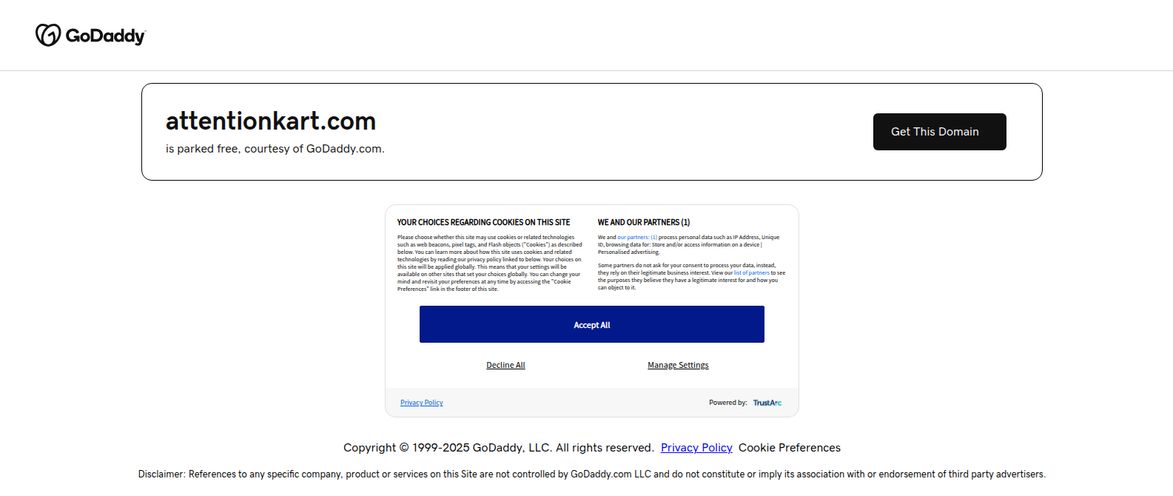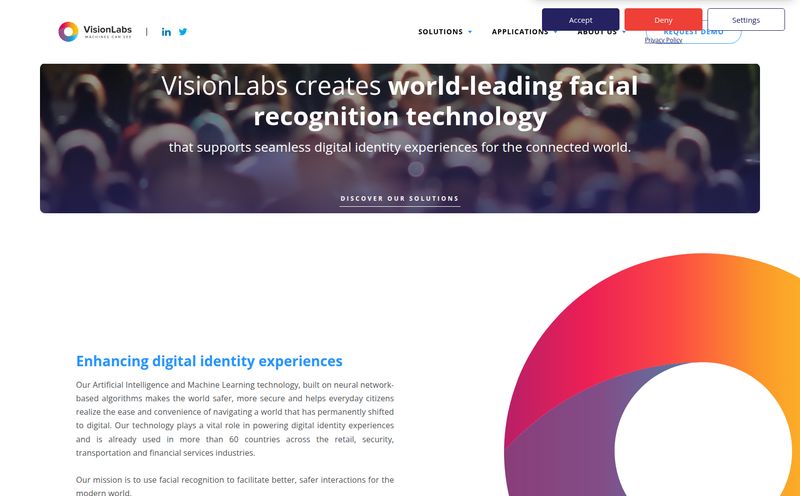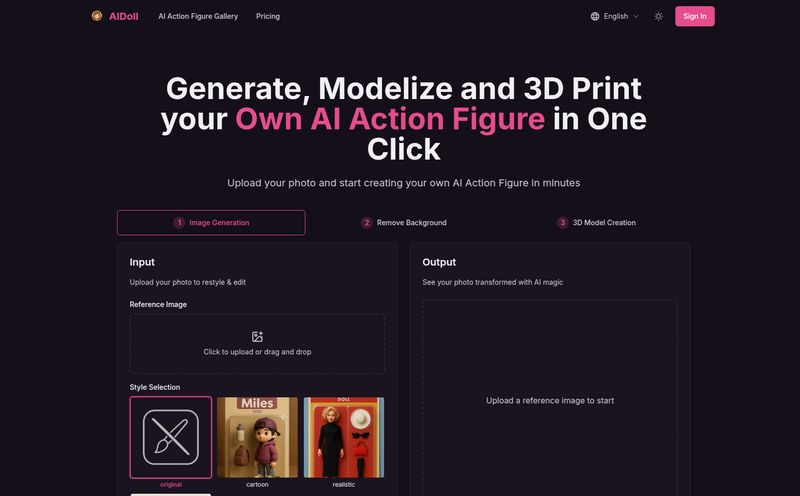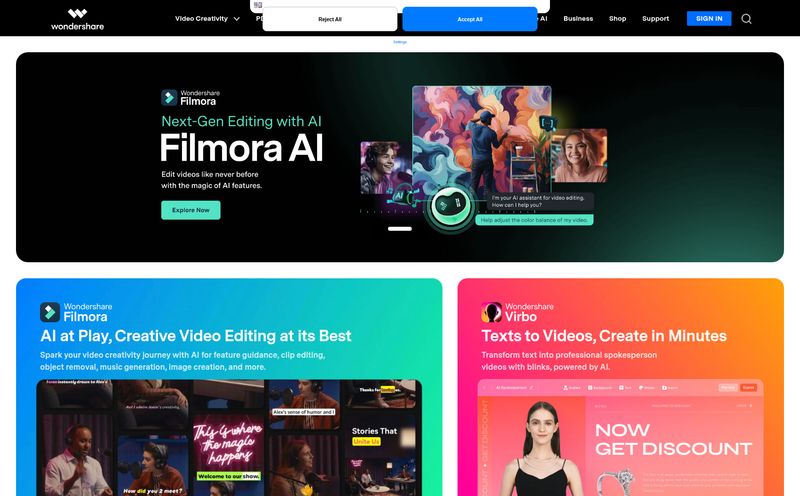We’ve all been there. You’re deep into a session with Midjourney or Stable Diffusion, trying to create a series of images with the same character. You have the perfect prompt. The first image? Chef's kiss. The second? Suddenly your hero has a different jawline and looks like the first character's long-lost, slightly-off cousin. The third? Don't even ask.
The struggle for facial consistency in AI image generation is real. It's been one of the biggest hurdles for creators, marketers, and anyone just trying to have a bit of fun. So when I stumbled upon a tool called IP-Adapter Face ID, which claims to solve this exact problem, my curiosity was definitely piqued. A tool that lets you clone your face into any scenario with just a few photos and a text prompt? Sounds too good to be true. So naturally, I had to take it for a spin.
So, What Exactly Is This IP-Adapter Face ID Thing?
In simple terms, IP-Adapter Face ID is a specialized AI model designed to do one thing really well: keep a face consistent across multiple AI-generated images. You feed it a clear picture of a face, write a text prompt describing a scene, and it generates an image of that person in that scene. It's built on a technology called an IP-Adapter, which is a clever way to condition image generation models on an image input without having to do a ton of heavy lifting.
Think of it like having a digital stunt double for your face. You write the script (the text prompt), and your facial double seamlessly steps into the role, whether it's an astronaut floating in space or a knight fighting a dragon. It’s designed for anyone who wants that character consistency without needing a computer science degree to train their own model.
Getting Started: My First Run-Through
Jumping in, the first thing I noticed was the interface. It's clean. Almost... spartan. There are no bells and whistles, which I kind of appreciate. It’s a tool, not an experience. The process is dead simple, laid out in four steps:
- Upload a photo (or a few).
- Write your prompt (e.g., 'A photo of a man as a cyberpunk hacker').
- Select the generation type.
- Hit 'Generate'.
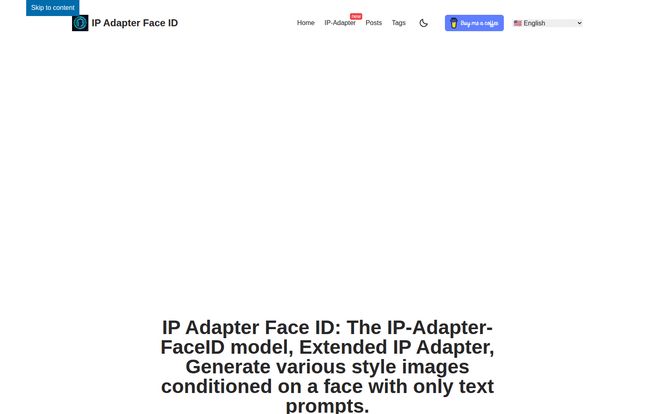
Visit IP Adapter Face ID
I grabbed a decent photo of myself, nothing fancy, and typed in my first test prompt: "A painting of me as a 17th-century naval captain, dramatic lighting." I hit the button and held my breath. Was this the moment my AI avatar dreams would come true?
The Good, The Bad, and The Occasionally Glitchy
Like any new piece of tech, especially in the fast-moving AI space, it wasn't a perfectly smooth ride. But the results were genuinely fascinating.
The Upsides: Where It Really Nails It
The main selling point is face consistency, and I have to say, it delivers. The naval captain it spat out actually looked like me. Same nose, same eye shape. It wasn't just a generic guy; it was my face, translated into a painterly style. I tried a few more: a gritty black-and-white photo, a vibrant fantasy illustration, and even a pixel art version. Each time, the resemblance was uncanny. This is the holy grail for anyone trying to create, say, a consistent character for a webcomic or a set of themed social media profile pictures. And the simplicity is a huge plus. You don't need to be a prompt engineering wizard; the tool does the heavy lifting of mapping the face for you.
The Downsides: A Few Stumbling Blocks
Now for the reality check. Right there on the homepage, there's a small disclaimer: "GPU resources are currently scarce, if it fails, try a few more times." And they aren't kidding. My first few attempts were met with a failure message. It's the digital equivalent of a busy signal. This tells me it's likely a popular tool running on a limited budget, which is fair. It just requires a bit of patience. Don't expect instant results every single time.
My other small gripe is the 'black box' nature of it. There's not a lot of information on the specific datasets used for training or the model's inherent biases. This is a common issue across the AI world, but it's something to keep in mind. You might find it has trouble with certain prompts or defaults to specific styles if you're not descriptive enough. I even tried to find a pricing or about page and was hit with a 404 error page. A bit of an oopsie, but it also adds to the charm of it feeling like a cool, in-development project rather than a polished corporate product.
How Does IP-Adapter Face ID Stack Up?
So, where does this fit in the broader AI image generator ecosystem? In my opinion, it carves out a very specific and very useful niche. For the hardcore tech crowd, training your own LoRA in Stable Diffusion offers more control, but that's a massive time investment and a steep learning curve. For the average user, platforms like Midjourney are getting better at character consistency with features like `--cref`, but it can still be hit-or-miss.
IP-Adapter Face ID sits in a beautiful middle ground. It's the 'good enough' solution that's actually great for 90% of people who just want to quickly and easily create images of a specific person. It’s more powerful and focused than a simple face-swap app but way less complicated than a full-blown custom model training session.
Who Is This Tool Actually For?
After playing around with it for a while, I have a pretty good idea of who would love this:
- Social Media Mavens: Imagine creating an endless supply of creative, on-brand profile pictures or post images where you’re the star.
- Indie Creators & Writers: Need to visualize a character for a story or storyboard? This is a ridiculously fast way to generate concept art.
- The Just-for-Fun Crowd: Honestly, a big audience is just people who want to see what they'd look like as a Viking or a character in their favorite video game. And it's perfect for that.
It's probably not the go-to for high-end commercial advertising where every pixel needs to be flawless, but for everything else? It's a fantastic and accessible option.
Let’s Talk Money: What’s The Price?
So, how much does this digital face-cloning magic cost? That's a great question, and one I dont have a clear answer to. As I mentioned, the hunt for a pricing page led me to a dead end. This suggests the tool is currently free to use, likely as a public demo or a passion project. The resource scarcity also points to a non-commercial setup. So for now, it seems you can jump in and play around without pulling out your wallet, which is always a bonus.
Frequently Asked Questions About IP-Adapter Face ID
Is IP-Adapter Face ID free to use?
It appears to be free at the moment. There is no pricing information available on the website, which suggests it's a public demo or project. Just be prepared for potential queues or failures due to high demand.
How many photos of my face do I need?
While you can use just one, providing a few clear, well-lit photos of your face from slightly different angles will likely give the AI more data to work with, resulting in better and more consistent outputs.
Why do my image generations fail sometimes?
The platform explicitly states that GPU (the processors that do the heavy work) resources are limited. If too many people are using the service at once, your request might fail. The best advice is to simply try again in a few minutes.
Can I use this for professional AI headshots?
You could certainly try, and you might get something cool for a casual LinkedIn banner. But for a formal resume or corporate website, I'd still recommend a professional photographer. The realism is good, but it's not quite at the level where it's indistinguishable from a real, high-quality photograph.
Is the face consistency perfect every single time?
It's impressively good, but not 100% flawless. With very complex prompts or extreme art styles, you might notice slight variations. But compared to general text-to-image models, it's a massive step up.
Final Thoughts
So, is IP-Adapter Face ID the final answer to AI's facial consistency problem? Not quite, but it’s one of the best and most accessible solutions I’ve seen to date. It’s a simple, powerful, and frankly, super fun tool that puts a complex capability into the hands of everyday users. The GPU limitations are a bit of a drag, but for a free tool, it's hard to complain.
Is it perfect? Nope. But it's a genuinely useful tool for quick, creative, and consistent face generation. I'm excited to see how it develops. For now, if you’ll excuse me, I have a prompt waiting: "Me, as a tired SEO blogger, finally finding a tool that works."
Reference and Sources
- IP-Adapter Project Page (GitHub)
- Tencent ARC (The research lab behind the core IP-Adapter technology)
